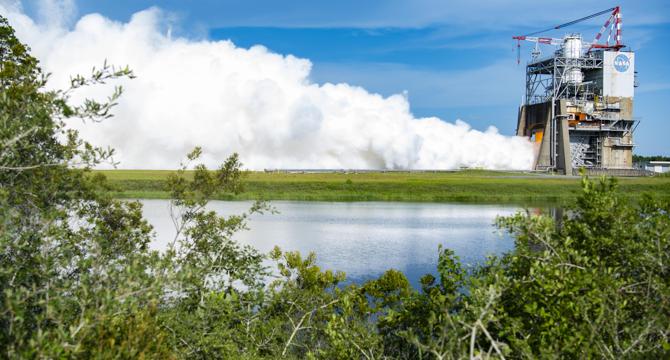Nasa
1d
63

Image Credit: Nasa
NASA Tests New RS-25 Engine
- NASA tested RS-25 engine No. 20001 for almost eight-and-a-half minutes at Stennis Space Center, Mississippi.
- The engine firing duration matches that of RS-25 engines during SLS rocket launches for Artemis missions.
- Artemis aims for lunar exploration, space research, economic benefits, and laying the groundwork for Mars missions.
- Four RS-25 engines from L3Harris Technologies power each SLS launch, generating a total of 2 million pounds of thrust.
- During the test, engine No. 20001 was fired at 111% power, the thrust level required for an SLS launch with the Orion spacecraft.
- The recent test was the first since NASA certified new production RS-25 engines in 2024.
- All RS-25 engines undergo testing at NASA Stennis before flight usage.
- The test involved a collaborative effort by NASA, L3Harris, and Syncom Space Services operators.
- The successful test reinforces readiness for upcoming SLS launches and Artemis missions.
- The test signals progress in NASA's preparations for lunar exploration and future crewed missions to Mars.
- The engine tests at Stennis are integral to ensuring performance and reliability for space missions.
- The RS-25 engines play a crucial role in NASA's Space Launch System and deep space exploration goals.
- The test validated the engine's power and functionality for future missions to the Moon and Mars.
- The recent test highlights the ongoing advancements in NASA's space exploration programs.
- NASA's testing procedures at Stennis Space Center contribute to the agency's mission success and technological advancements.
- The latest RS-25 engine test demonstrates NASA's dedication to advancing space exploration capabilities.
Read Full Article
3 Likes
For uninterrupted reading, download the app